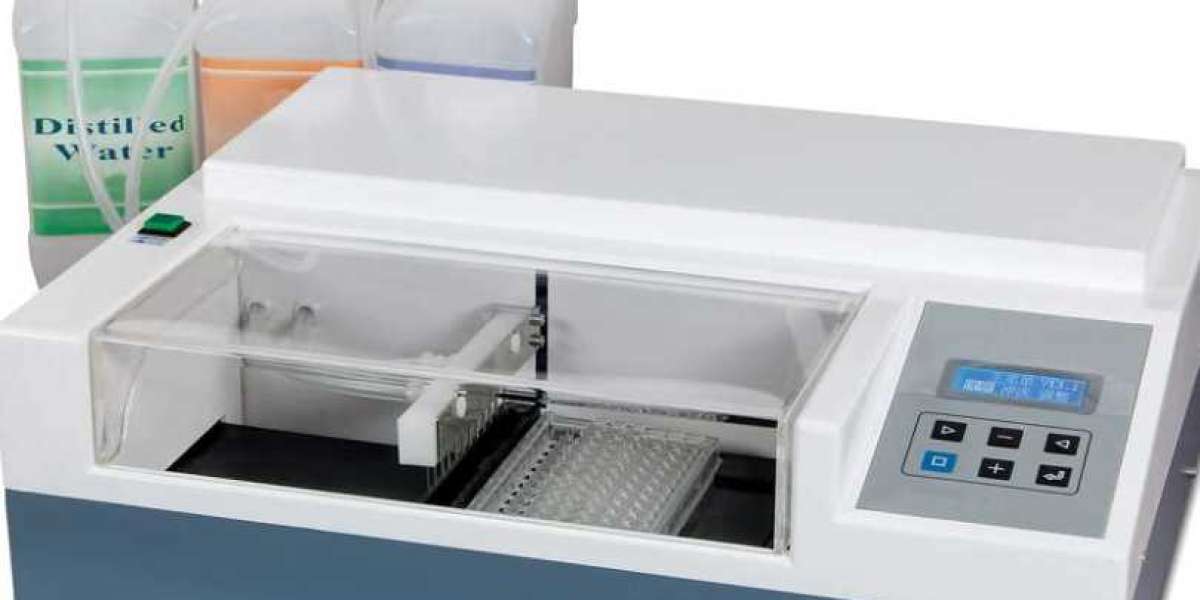In the field of science, the process of making observations of biological specimens requires the utilization of a wide range of different kinds of scientific instruments, which is a prerequisite for the successful completion of this step. Because these plates are also available in the form of microtiters, elisa microplate reader is possible to further improve the accuracy of the observations that are made using them by utilizing the microtiter format. It has been observed that various kinds of microplate readers are utilized for the purpose of making observations in clinical diagnostic laboratories as well as academic research laboratories. Both types of laboratories are affected by this fact. There is a widespread consensus that the most efficient microplate readers will have reaction rates that are on the lower end of the spectrum. This is done to make certain that the samples do not contain any infectious agents of any kind. Plates consisting of a large number of wells, each of which is designed to hold one of the specimens that will be used in the analysis process Each well on the plate is intended to hold one of the specimens that will be used in the analysis. These components are also known as analytes, and in a scientific setting, a microplate reader is used to examine how each of these components behaves in order to draw conclusions about the overall system.
Researchers and scientists who are employed in the fields of life sciences and pharmaceuticals are exerting their efforts in the direction of the goal of making the process more proficient and efficient
- As a consequence of this, the researchers are now in a position in which they are able to devote a greater proportion of their time to the analysis of the data and the production of high-quality findings
- In this scenario, the wavelength can be chosen by employing either an optical filter or a monochromator
- Both of these tools are available
- Both of these different kinds of equipment are capable of separating light into its component wavelengths, but for different reasons
- This is done in the interest of gaining a deeper comprehension of the connection that exists between the two variables
- It is then miniaturized even further so that it can function quantitatively in a microplate reader, with performance that is suitable for the purposes of biological research
- This is done so that the device can be used
- In order to carry out an accurate analysis of the samples, the colorimetric chemical techniques are also utilized in the processes of analyzing all of these things
- This is done in order to ensure that the results are reliable
This is done to ensure that the analysis of all of these things is accurate, and it is done to ensure that accuracy. The instrumentation of the type of microplate reader that is being discussed in this article is comprised of the following components and subassemblies, respectively:
The first optical system is an excitation system, and in order to illuminate the biological sample, it makes use of a specific wavelength of light. This helps the sample be more visible. Utilization of a second optical system is what makes the accomplishment of this goal conceivable.
The apparatus used for the illumination—Fluorescence is the term given to the process that takes place when rays of light pass through a specimen, causing the specimen to produce its own light as a result. This process can be observed using the instrumentation used for the illumination. Fluorescence is the term that's used to describe the phenomenon that's taking place here. This system not only collects the light that is being emitted, but it also separates that light from the light that is being used to excite the plate. Its primary function is to ensure that no light is wasted. In addition to this, in order to carry out the task of signal measurement, it makes use of a light detector that is referred to as a photomultiplier tube, or PMT for short. This method for determining the quality of samples focuses on determining the fluorescence intensity of calcium dyes that are used in the analysis process. This determination is the primary objective of this method. The process that will be carried out requires these dyes in order to be successful. During the time that the plate reader is engaged in the prior step, this step will take place. After the event that caused the excitation, the amount of time that these molecules continue to emit can be measured in milliseconds.
This time period occurs after the initial excitation. Fluorescein is the name of the standard fluorescent dye that is used in the method for measuring the intensity of fluorescence. This method has been around for quite some time. After being stimulated by the method, the fluorescein won't take more than a few nanoseconds before it starts to give off light. After they have completed the prior step, they will proceed to this next step. It is referred to as time resolved fluorescence energy transfer, and it is the manifestation of these phenomena that is most frequently observed. The optical phenomenon known as luminescence can be detected using a method that is not as complicated as the methods that have been described thus far, which are more challenging to carry out successfully. To clarify, it is not required that both of these conditions be met in order for the statement to be true. This particular microplate reader utilizes a photomultiplier tube, also known as a PMT detector, in contrast to the other microplate readers, which count photons using a PMT detector that counts photons.
In other words, this reader counts photons using a PMT detector. One is able to determine, with the help of the microplate readers, whether or not the aforementioned characteristics are present in the biological samples being examined.









